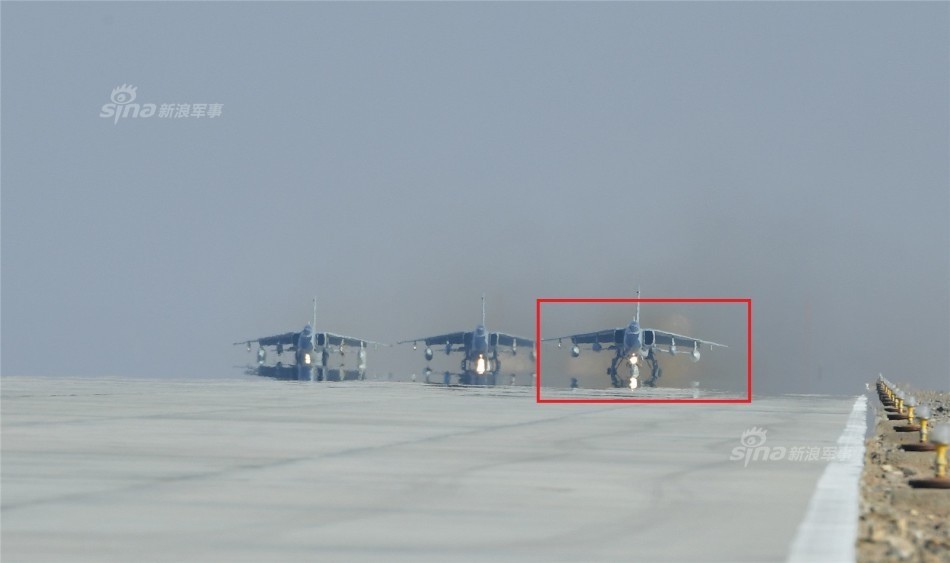Dysta
Posts: 1909
Joined: 8/8/2015
Status: offline

|
quote:
ORIGINAL: Hongjian
China's directed energy weapon project
US has 50 more years than China for weaponizing microwave, but something slowing the research with several circumstances.
https://www.scientificamerican.com/article/high-power-microwave-weapons-start-to-look-like-dead-end/
quote:
-snip-
However, the day of the test was cold and rainy. The water droplets in the air did what moisture always does: they absorbed the microwaves. And when some of the reporters volunteered to expose themselves to the attenuated beam, they found that on such a raw day, the warmth was very pleasant.
A demonstration of the system on a sunny day this March proved more successful. But that hasn't changed a fundamental reality for the Pentagon's only acknowledged, fully developed high-power microwave (HPM) weapon: no one seems to want it. Although the Active Denial System works (mostly) as advertised, its massive size, energy consumption and technical complexity make it effectively unusable on the battlefield.
The story is much the same in other areas of HPM weapons development, which began as an East–West technology race nearly 50 years ago. In the United States, where spending on electromagnetic weapons is down from cold-war levels, but remains at some US$47 million per year, progress is elusive. “There's lots of smoke and mirrors,” says Peter Zimmerman, an emeritus nuclear physicist at King's College London and former chief scientist of the US Arms Control and Disarmament Agency in Washington DC. Although future research may yield scientific progress, he adds, “I cannot see they will build a useful, deployable weapon”.
For many critics, the US HPM program has become a study in wishful thinking, exacerbated by a culture of secrecy that makes real progress even more difficult.
quote:
-snip-
The microwave gap
The concern that other nations, or even terrorists, could be working on similar technology seems to have been one of the prime motivations for the US military to continue investing in microwave weaponry, despite the apparent lack of progress. According to a 2009 briefing on non-lethal technologies prepared by the Office of Naval Research and obtained under the Freedom of Information Act, Russia, China and even Iran are pursuing HPM programs — and the UK Defense Science and Technology Laboratory at Fort Halstead is sponsoring a classified car-stopping program.
But such programs are not necessarily proof that the cold-war HPM arms race is still going on. At least some countries may — like the United States — be conducting research out of fear of becoming vulnerable to such weapons. Modern technologies such as mobile phones are particularly susceptible to HPMs, says Michael Suhrke, head of the electromagnetic effects and threats business unit at the Fraunhofer Institute for Technological Trend Analysis in Euskirchen, Germany.
As for HPM weapons in the hands of terrorists, many scientists regard that threat as far-fetched at best. Even if terrorist groups had the sophistication to carry out the necessary testing, says Yousaf Butt, a physicist in the high-energy astrophysics division at the Harvard-Smithsonian Center for Astrophysics in Cambridge, Massachusetts, why would they? A microwave weapon of any magnitude would probably have to be powered by explosives. And if they had that kind of material, he says, “why wouldn't they just explode it?”
“Is it conceivable?” asks Philip Coyle, who in 2010–11 served as associate director for national security and international affairs in the White House Office of Science and Technology Policy, and is now a senior fellow at the Center for Arms Control and Non-Proliferation, a think tank based in Washington DC. “Barely, I think. I wouldn't take it for granted that terrorists couldn't do it. But I'd rather terrorists spent all their time working on [an HPM weapon] than car bombs.”
Experts still disagree on whether HPMs might eventually make useful weapons. But one thing is clear: the mythical e-bomb capable of stopping cars or planes has not yet materialized on the battlefield. Asked whether the Air Force had produced any operational weapons, its research lab said only: “Due to operational concerns, we are unable to respond to this question.”
The secrecy that surrounds HPM weapons research seems to have greatly exacerbated technical obstacles to the program. In 2007, for example, a report on directed-energy weapons by the Defense Science Board said that the Pentagon had not effectively used data collected by university researchers to understand microwave effects. The Air Force claims that sharing is better now. But working in a field shrouded in secrecy still affects how information is disseminated. Neuber, for example, could agree to answer questions for this article only if he replied in writing, and only after his responses had been cleared through the US Army office that sponsors his team's work.
“Working in an area that is to a large extent of military interest requires playing by a set of different rules to some extent,” he wrote. “Some flow of information is not as free as in other areas of the research endeavor.”
To John Alexander, a retired army colonel who once headed the non-lethal weapons program at Los Alamos National Laboratory, the secrecy reinforces the air of fantasy around the whole endeavor. “My point is always: chemistry and physics work the same way for everyone, and there are smart folks out there, so who are you trying to fool?” he says. “The people not getting adequate information were our own commanders.”
< Message edited by Dysta -- 1/24/2017 10:20:14 AM >
_____________________________
|
 Printable Version
Printable Version



























 New Messages
New Messages No New Messages
No New Messages Hot Topic w/ New Messages
Hot Topic w/ New Messages Hot Topic w/o New Messages
Hot Topic w/o New Messages Locked w/ New Messages
Locked w/ New Messages Locked w/o New Messages
Locked w/o New Messages Post New Thread
Post New Thread